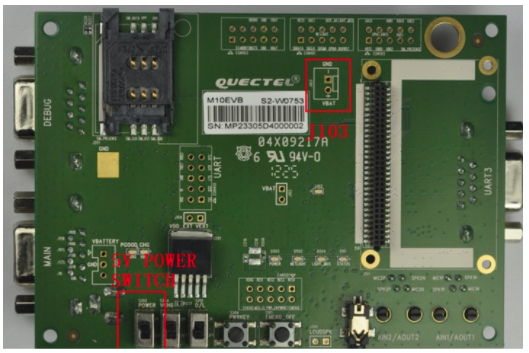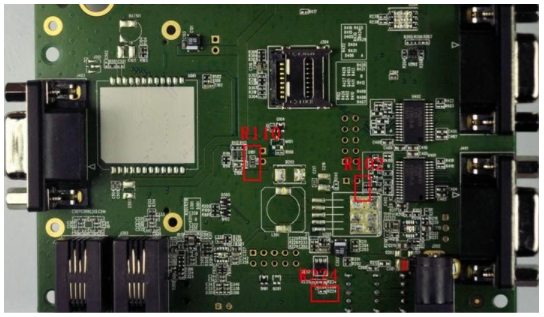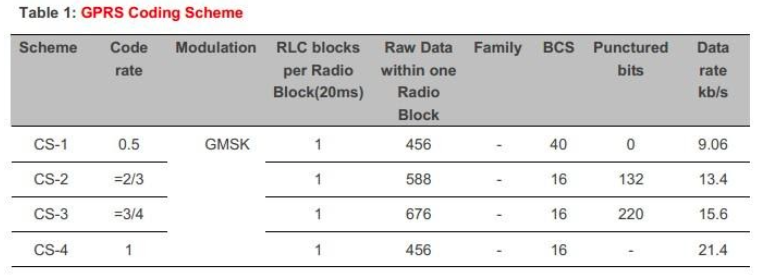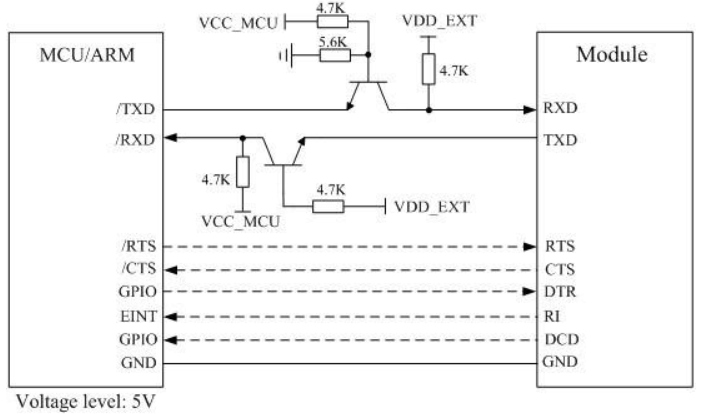FAQs
Audio
1.1 What is the audio output capability of the module?
1.2 Why might a call hang up when you use ATD to make a call?
- Check if the MCU has sent an ATH command to end the call
- Check whether there are capacitors with high capacitance (i.e. more than 1uF) in the audio interface. In general, only 10pf and 33pf capacitors can be connected to the audio interface to eliminate RF interference. Capacitors with high capacitance will cause instability to the audio PA, which may lead to a call hanging up
Call
2.1 How should the caller ID and Connected Line Identification Presentation (CLIP) be set up?
- AT+CLIP=1 can be used to present the calling line, and you can set AT+QCLIP=1 to present the string type corresponding to the entry saved in the phonebook
- AT+COLP=1 can be used to present the connected line, and you can set AT+QCOLP=1 to present the string type corresponding to the entry saved in the phonebook
2.2 What should the maximum time be that a module responds with ‘OK’ after executing ATH to hang up a call?
Flash
3.1 What is the lifetime of the module’s flash memory?
MMS
4.1 Can UTF8 and UCS2 coding schemes be supported in the MMS? Which one is better?
PHB
5.1 How can a subscriber number be configured and queried?
5.2 How can a phonebook number be configured and queried?
PPP
6.1 How can PPP be used to dial up in WIN7 OS?
- Choose “network and sharing centre” in the control panel 2. Choose “set a new connection and network” in “network and sharing centre” 3. Choose “set dial up connection” in “set a new connection and network” 4. Choose “skip” in the following interface 5. Choose “change the adapter configuration” 6. Choose “attribution”, then choose 115200 baud rate in the general option and click “OK” 7. Choose “dial up”, then finish the PPP dial up
6.2 What are the possible reasons for PPP dial up failure?
Power Supply
7.1 Is it possible to convert the power supply from 5V to 4.4V using a diode?
7.2 Is it possible to supply a module with power using standard USB?
7.3 How can a module be powered using higher DC voltage (e.g. automotive 12V/24V/48V)?

7.4 How to test the power consumption in the sleep mode?

 Note:
Note:
- Removing R110 is to ensure the module is being powered directly from the external power via J103
- The power adapter should be plugged in to supply power to the RS232 converter and LEDs, which will avoid the increase of power consumption caused by sink current.
- The VDD_EXT of the module is used to supply power to the RS232 converter. In order to avoid the RS232 converter being supplied by VDD_EXT, R102 should be removed. Meanwhile, R224 should be soldered with a 0R resistor to supply power to the RS232 converter with a 5V power adapter.
RF
8.1 What are the design considerations when using embedded antenna?
- Choose a DC-DC converter with low switching frequency
- The input and output line of the DC-DC converter should be far away from the antenna. Note: all power supplies should also be far away from the antenna
- The antenna should be far away from the LCD, especially the FPC of the LCD.
- The antenna and RF trace should be far away from the main CPU, including the SDRAM and flash. It is recommended to add EMI filters at the high-speed line of the CPU, SDRAM and flash
- Use the shielding case to cover the CPU, SDRAM, flash and DC-DC converter
- The antenna should be far away from the SIM card
- Ensure that the enclosure surrounding the antenna and structural components are not made of metal
- As the enclosure and components surrounding the embedded antenna will influence the RF performance, it is strongly recommended to provide the device to the antenna vendor to optimize antenna performance. Quectel provides the document for your reference
8.2 Can the RF pin endure thunderstroke?
8.3 What is the impact if many modules work simultaneously and the antennas of the modules are very close to each other?
- If the antennas of modules are too close to each other, it will cause EMI interference which will result in diminished signal quality and raise the BER, and cause long-lasting issues with connection or connection failure. We suggest that the distance between each antenna should be more than 20cm
- If many modules are working simultaneously, it may prevent some modules from registering with the network due to a lack of base station resources. We recommend using the QuecScan/QuecLock function to lock different modules at different frequencies. For detail you can refer to . You can also use SIM cards from different operators if possible
8.4 What is the maximum transmission speed of GPRS?

SIM Card
9.1 How to enable hot-swap function of SIM card?
- Ensure that the module’s SIM_PRESENCE pin has been connected
- Enable SIM card detection via AT command
9.2 SIM card cannot be recognized after the module works for a while
- Use AT+CFUN=4,1 to disable the RF function and see if the issue persists
- Put the antenna close to the SIM card and SIM card signal line, then see if the issue occurs more frequently
- Check if there is any electrical/magnetic field around the testing field, e.g. high voltage transmission lines or high-power wireless devices, and try using a shielding case to cover the SIM card and all the SIM signal lines
- Try to connect the pins of SIM card signal (SIM_DATA/SIM_CLK/SIM_RST/SIM_VDD) to ground via 15~33PF capacitors to eliminate RF interference
- Change to another SIM card and see if this resolves the issue
- Put the problematic card on the Quectel EVB or cell phone to see if the same issue occurs
9.3 What can prevent the module from registering with the network after powering on?
- Use AT+CPIN to check whether module can recognize the SIM card
- Check whether the SIM card is out of service
- Use AT+QBAND and AT+CFUN to check the working band and working mode of the module respectively
- Use AT+CSQ to check whether the RF signal is normal
- Use AT+GSN to check whether the module’s IMEI number is legal. Changing the IMEI number can cause networks in some areas to treat the changed IMEI number as illegal and prevent the module from registering with the network
SMS
10.1 What are the differences between text mode and PDU mode?
- When using text mode, it is necessary to configure some parameters via AT commands like AT+CMGF, AT+CSCS and AT+CSMP
- When using PDU mode, you need to include all the parameters like MS center number, receiver number and validity into one PDU string
10.2 What is the maximum size of individual short messages?
- Using the GSM 7-bit alphabet the maximum size is 160 characters (1120bits/7 bit=160)
- Using the GSM 8-bit alphabet the maximum size is 140 characters (1120bits/8 bit=140)
- Using the UCS2 16-bit alphabet the maximum size is 70 characters (1120bits/16 bit=70)
10.3 What is ‘long SMS’?
10.4 Can incoming messages be received when the SMS memory space is full?
10.5 Why does the module respond with an error message when sending some SMS commands at the power-on stage?
Serial
11.1 How should UART communication failure be dealt with?
 2.1.2 Abnormal communication between MCU and module
1) Check that the baud rate of the MCU corresponds with that of the module. Quectel modules are set to autobauding by default. Send 2~4 AT commands to synchronize the baud rate of the module (some modules might need more AT commands to achieve synchronization). Once the module is synchronized, we suggest using an AT+IPR command to fix the baud rate and then AT&W to save it.
2) If using three wires to connect the MCU and the module, you should check if the hardware control is closed.
2.1.2 Abnormal communication between MCU and module
1) Check that the baud rate of the MCU corresponds with that of the module. Quectel modules are set to autobauding by default. Send 2~4 AT commands to synchronize the baud rate of the module (some modules might need more AT commands to achieve synchronization). Once the module is synchronized, we suggest using an AT+IPR command to fix the baud rate and then AT&W to save it.
2) If using three wires to connect the MCU and the module, you should check if the hardware control is closed. 11.2 How to match the UART level between MCU and module?
 2) If the UART level of the MCU is 3V, change the resistor value of 5.6K to 15K.
3) If the UART level of the MCU is 5V, the level shift circuit is shown as below.
2) If the UART level of the MCU is 3V, change the resistor value of 5.6K to 15K.
3) If the UART level of the MCU is 5V, the level shift circuit is shown as below.



TCP/UDP
12.1 What is the maximum length for TCP domain names?
12.2 What is the maximum APN length?
12.3 How many methods are there of receiving data under TCP/UDP connection?
- Direct push access mode: Output received data directly from the UART port
- Buffer access mode: Read received data from internal buffer using AT commands
12.4 What is the maximum length of data sent by AT+QISEND?
12.5 What is the maximum value of the parameters returned by AT+QISACK?
12.6 Why has the server not yet received the data after the module has responded “SEND OK”?
12.7 In which cases will the module respond “CLOSED”?
- The TCP connection is closed by the server
- If the module still cannot receive ACK from the server after trying 12 times to transmit data to the server, it will automatically close the TCP connection and respond “CLOSED”
- If the TCP connection is interrupted the module will respond “CLOSED” due to network abnormality.
12.8 What is the difference between CGDCONT and QICSGP?